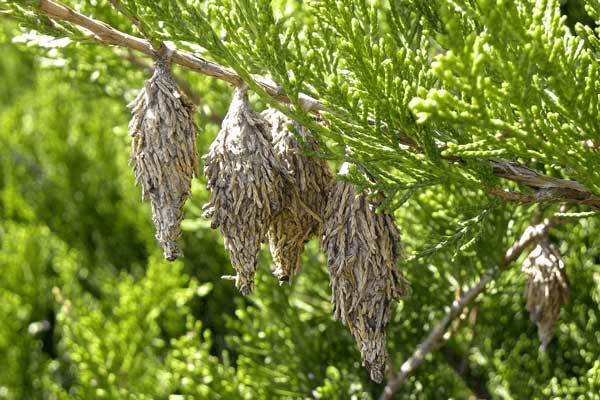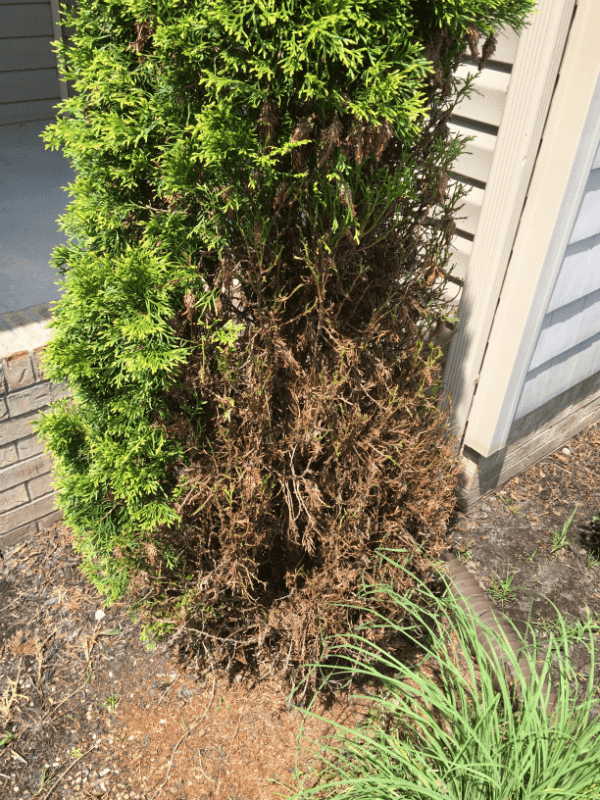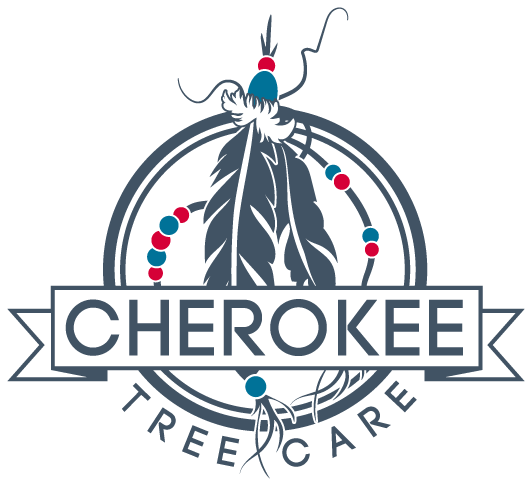We at Cherokee Tree Care have recently been getting quite a few calls from worried customers about bagworms. Due to last year’s bagworm-heavy season and the damage they caused, many people are on the lookout for the emergence of these pests and want to know how to get rid of bagworms. Here, we will discuss the bagworm, its lifecycle, and what we can do to manage and begin pest control.
Bagworms
Bagworms are insects with chewing mouthparts that feed on the foliage of many tree species. They are known for the protective bag they form around themselves. Adult males are dark, fuzzy moths with clear wings and females are maggot-like caterpillars that never leave their bag.
Bagworm Lifecycle
Eggs hatch and small larvae emerge from their bags at the end of May or early June. The larvae release a thread of silk from which they hang, and then are carried to their host plant by the wind. As soon as they reach their host plant, and while they are still very small, the larvae begin to form a protective bag around themselves made from plant debris. This bag is not yet fully enclosed and allows the larvae to continue to move, feed, and grow until the end of the summer.

At maturity, they attach themselves to their host and completely enclose themselves in the bag as they develop into the pupa stage. Adult males will emerge from their bags in September to mate, then die. The females remain immobile and lay eggs in their bag to hatch the following season.
Target Trees
Bagworms will feed on a large variety of tree species. Some of their favorites are Arborvitae, Red Cedars and other Juniper species, White Pines, several other Evergreen species, as well as some deciduous trees.
Tree Damage
Bagworms will feed on the foliage of their host tree. This can be especially damaging to Evergreen trees when populations are large, and damage is continuous over consecutive years.

Pest Control
Light infestations can be controlled naturally by handpicking the bags off your shrub or tree and destroying them by burning or suffocating in soapy water. Chemical control may be necessary. This should be done before the larvae are completely enclosed in their bags (in August).
While pest emergence and populations vary every year due to the weather conditions, last year showed us how much damage these pests can do to our trees. We are keeping a close eye out for the emergence of the bagworms this year and doing our due diligence to protect our customer’s trees from their damage. If you have questions or would like to be placed on our schedule for bagworm protection this year, give Cherokee Tree Care a call.

